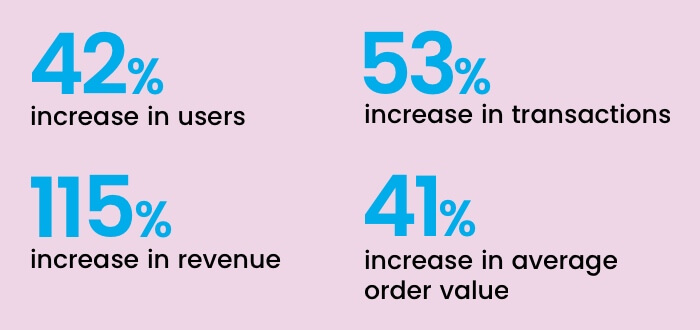The ability to build websites using open source platforms and content management systems has not only changed how we create and consume content - it’s also changed how we shop and sell products online.
Gone is the need for small businesses to operate physical stores. As we’ve talked about previously, 70% of the buying decision is now made before a buyer even gets in touch, with a lot of the buyer research done through the power of Google.
As the shift towards online stores becomes more and more dominant, you’re going to need to find an eCommerce platform that is right for you, and the reality is there are hundreds to choose from. Some are built specifically for the purposes of eCommerce, whereas others are designed for a multitude of purposes.
To help you simplify your choices, we’ve selected the two biggest players, Magento and WordPress. Each has their own pros and cons, and in this blog post, we’ll provide you with a comprehensive comparison. Let’s get started.
WordPress vs. Magento: The Short Answer
Before we look at each platform individually, it’s worth pointing out the main difference. That is that WordPress lacks built-in features to build an eCommerce website. This is solved by installing WooCommerce, a plugin that is part of the WordPress family.
NOTE: WooCommerce was originally a third-party plugin before being acquired by Automattic, operator of WordPress.com and core contributor to the WordPress software.
Magento however is specifically designed with eCommerce in mind, as we’ll explore in more detail.
What are WordPress and Magento? (Price, Features and eCommerce Functionality)
This section provides a brief overview of both WordPress and Magento, specifically looking at how much they cost, noteworthy features and what eCommerce functionality is available.
Overview of WordPress
Originally designed as a blogging platform, WordPress launched in 2003 and has taken the digital marketing world by storm ever since. Now, WordPress is the dominant content management system on the market, operating 64% of all websites globally.
WordPress is known for being able to build a website for virtually any type of business, be it small business or enterprise, charitable or for profit, and more. The experience is relatively user-friendly, with users with little-to-no web development experience being able to use the platform with relative ease.
You also have a lot of customisation both natively and through third-party WordPress plugins. There are tens of thousands of themes available (both free and paid) that can be customised in great detail, and you can add plugins such as The SEO Framework for SEO and WooCommerce for your online store to unlock additional functionality.
Finally, let’s talk about pricing. WordPress is an open source platform, making it free. However, the additional costs, excluding initial development, would arise from items like hosting and paid plugins.
Overview of Magento
Magento is an eCommerce powerhouse! Today it is widely seen as one of the best choices for building online stores, with businesses such as Samsung and Ford using it for their own websites.
There are two options available to users: Magento Commerce (previously Magento Enterprise), which is suited to larger eCommerce businesses, and Magento Open Source (formerly Magento Community) which is ideal for those who want to build an eCommerce store from the ground up.
Magento offers a plethora of built-in eCommerce features, such as multi-store management, generating reports, mobile commerce, marketing, search engine optimization, and other vital eCommerce tools. The Open Source software also gives you access to community support.
However, the initial setup of Magento can be very labour intensive, meaning in order to take full advantage of everything the software has to offer, you’re going to need an agency behind you, whether it’s for building the website, or the ongoing maintenance that comes with it.
In terms of pricing, Magento Open Source is a free download, whereas Magento Commerce is a paid product starting at £10,000 a month, the price of which is dictated by your company revenue.
Pros and Cons of WordPress vs. Magento
Now that we’ve examined an overview of both WordPress and Magento, here’s a quick list of pros and cons of each platform:
Pros and Cons of WordPress
- Pro: WordPress isn’t solely designed as an eCommerce platform, meaning you can build an online store that also performs in areas like content marketing and SEO.
- Con: As mentioned earlier, eCommerce functionality is not pre-built, meaning you’ll need to install the WooCommerce plugin first to take advantage of the features.
- Pro: You can get started for free, and install pre-built themes that don’t require any web development experience to edit.
- Con: Costs can quickly add up as you install more plugins to unlock additional functionality. This could be said for Magento too, though typically most plugins are free.
Pros and Cons of Magento
- Pro: Magento comes preloaded with eCommerce functionality, including numerous sales and inventory features.
- Con: Whilst it’s still user friendly, Magento is seen to some as not being beginner-friendly if you’re trying to develop a store. That being said, it’s perfectly fine from an admin and customer perspective.
- Pro: It’s easy to scale-up your Magento platform, as your business grows in sales and revenue.
- Con: If you plan on blogging, you’ll need a separate platform, as Magento doesn’t come with built-in blog support (more on that later).
Which should you choose, and when?
At Selesti, we don’t take a “one size fits all” approach to building websites. As part of our web development process, we undertake a discovery phase to determine which platform is best for you and your business, based on your needs and your goals.
At this point, you’re likely weighing up which option is best for you, and so allow us to summarise which you should choose, and when.
When weighing up which option is best for you, it’s important to consider what features you need the most. Here are some questions to ask yourself:
- Will your online store contain more than 1,000 products?
- Does your marketplace need to be multi-vendor, multilingual, or multi-currency?
- Do you need external integrations, such as integrating your store with your POS system?
- Are you expecting heavy traffic to your store from day 1?
If you answered “Yes” to most, if not all of these questions, then Magento will likely be the right platform for you. Alternatively, ask yourself:
- Do you have a smaller budget or very few products to market?
- Do you want to get your online store up and running quickly?
- Would you prefer to not need much customisation to your theme?
- Are you planning on adding lots of content, such as a blog?
If the answer is “Yes”, then WordPress is the platform you.
NOTE: This is not an exhaustive list of questions, and you should do your own research on each platform before making a decision. However, we hope that this blog post has helped with some of that research.
Using WordPress and Magento together
If you’re struggling to decide which platform to choose, or you simply want the best of both worlds, then you might like to know how you can integrate both together.
Through the power of FishPig, you’re able to integrate a WordPress blog into your Magento website with a free extension, bringing the power of blogging and eCommerce together. This gives you added creativity; for example, you can use your Magento store to showcase your products, and your WordPress blog to promote them and bring them to life.
The integration also gives you additional SEO functionality, as well as the ability to use WordPress shortcodes and page builders, which makes the possibilities of this combination very exciting!
How’s your website?
Both Magento and WordPress are extremely powerful and scalable website tools, but for very different reasons. The platform you choose will ultimately depend on your priorities and goals moving forward.
You can read more about how we build WordPress and Magento websites, or take a look at some of our work. Alternatively, if you want to have a conversation about building a new website for your business, we’d love to hear from you.


